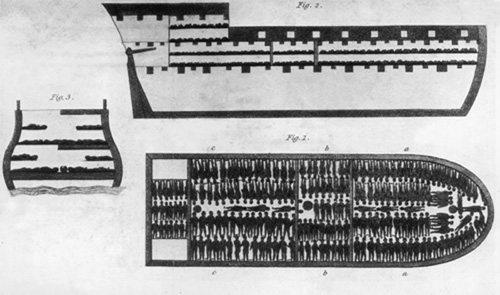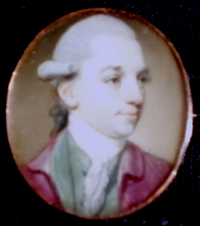

Ottobah Cugoano, also known as John Stuart, was born around 1757 in the city of Agimaque on the coast of what is now Ghana. His father was companion to the chief of the Fanti tribe. Kidnapped and sold into slavery by fellow Africans as a young teenager, Cugoano worked in Caribbean slave-gangs until brought to England in 1772. He was christened John Stuart at St James’s Piccadilly in 1773. How he gained his freedom is uncertain; his own writing mentioned that ‘when my master perceived that I could write some, he sent me to a proper school for that purpose to learn.’ Maybe it was that same master who granted his freedom. By the 1780's, he was employed by the painter Richard Cosway, thus bringing him into contact with high society. No certain portrait of Cugoano is known to exist.
Cugoano was actively involved in the campaign against slavery in London, working with another freed slave, Olaudah Equiano. In 1787, he published ‘Thoughts and Sentiments on the Evil and Wicked Traffic of the Slavery and Commerce of the Human Species’ 148 pages which forcefully challenged slavery and those involved in the slave trade. Two extracts are set out below:
‘At all times, while a man is a slave, he is still in captivity, and under the jurisdiction of robbers; and every man who keeps a slave is a robber, whenever he compels him to his service without giving him a just reward.’
‘If there was no other way to deliver a man from slavery, but by enslaving his master, it would be lawful for him to do so if he was able, for this would be doing justice to himself, and be justice, as the law requires, to chastise his master for enslaving of him wrongfully.’
What happened to Cugoano in later years is unknown, as is the date of his death.

| Home | The Book | Historical Background | J.D.Oswald | Register for updates | Look Inside & Buy |
© J.D. Oswald 2012. All rights reserved.
In a time when there were no photographs, telephones or internet, and when letters could take days, weeks or even months to arrive, a portrait miniature must have been the most precious of objects. No wonder then that miniatures of loved ones were often attached to diamond necklaces and hair bracelets, transformed into jewelled brooches, or kept in specially made cases.
The late eighteenth and early nineteenth centuries are often referred to as the ‘Golden Age’ of miniature painting. During this time, miniaturists (sometimes referred to as limners) flourished in line with Britain’s increasing prosperity; possession of a miniature was no longer open only to the privileged few. Of course, some painters were regarded more highly than others. Both Richard Cosway and Richard Crosse were leading miniaturists of the time, but Cosway’s prominent social and public position tended to eclipse all others.
The word ‘miniature’ comes from the Latin word ‘miniare’ (meaning to colour with red lead), a reference back to the first miniature painting in medieval manuscripts. By 1780, it was common for a miniature to be painted on ivory, which would be cut down through the tusk, scraped and thinned until translucent. Water colour paint was used, thickened with gum arabic to help the paint stick.
‘I was much puzzled at my first attempt on ivory, which I endeavoured, by a successive number of whimsically inefficient experiments, to prepare myself, till I discovered pumice stone to be the only article required, after rubbing and scraping and sanding had been tried in vain… On ivory, your progress is necessarily slow, because the preceding tint must dry before another succeeds to it, or it will come off, as the ivory does not absorb.’ (New Hints on Miniature Painting by an Old Professor, 1837, courtesy of the National Art Library)
